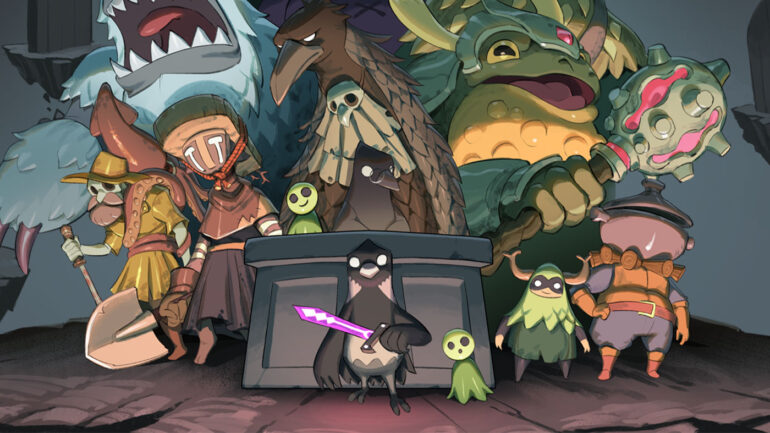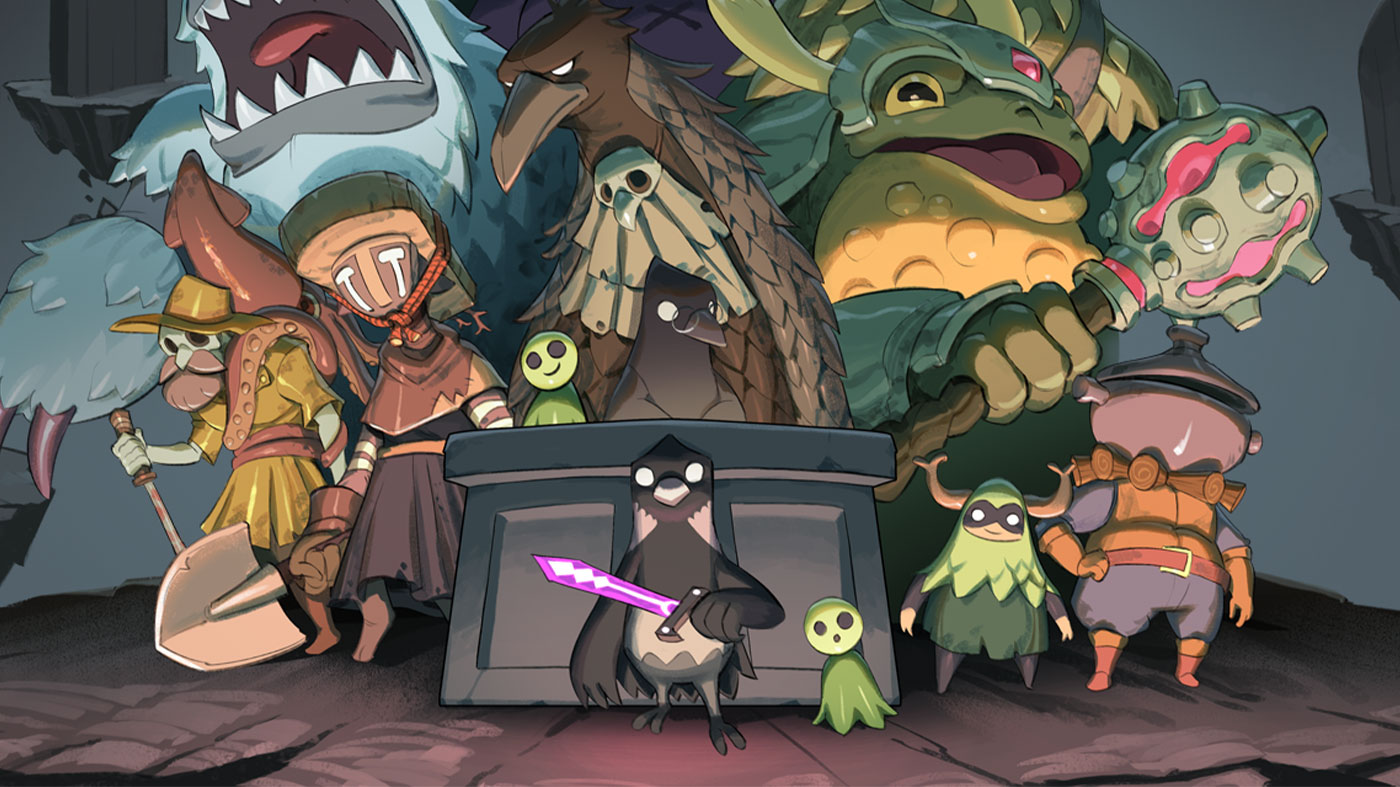As a rather unassuming adventure about a white-collared crow whose day job takes an unexpected turn, Death’s Door is an utter delight. As a follow-up to Titan Souls, a notoriously tough top-down action game from British developer Acid Nerve, it nails a friendlier facsimile of the hair-trigger combat that came was best known for all the while introducing the mysterious air of a world long untouched by death.
There’s a genuine Studio Ghibli undercurrent in Death’s Door’s narrative, which stars a small crow, working his mundane and morbid nine-to-five of reaping and processing souls in the bleak, featureless void known as the Hall of Doors. After an assignment slips through his grasp, the crow must venture through Death’s Door to retrieve it, but not before vanquishing three “Giant Souls” known about the land first. It’s all wonderful and fantastical and I really appreciate how the plot handles the idea of death and the weight it carries. It does this by eulogising the so-called villains, adding a human dimension to their characters.
It’s sweet in a way and I felt a pang of sadness with each of their passing. The fact that these seemingly irredeemable monsters have loved ones and understandable motives gave meaning to their deaths, a scary concept that’s at the heart of the game. That said, it isn’t all doom and gloom as Death’s Door has a wicked sense of humour, which isn’t all that surprising from a British development duo.

As a sophomore effort following Titan Souls, Acid Nerve’s feathery follow-up retains many of the same traits but bending them to be far more accessible to players than its spiritual predecessor. It has the same sense of adventure, as well as a focus on high-stakes boss battles, but it’s far more forgiving in its checkpointing and our hero crow is a tad more durable than the one-hit wonder from Titan Souls. The crow’s double-pronged attack of both steel and sorcery helps keep combat varied, especially with the frequency the game throws new options, including a tattered umbrella, at the player. I never settled on one particular weapon, I found them all to be worthy although once I unlocked the bomb spell I found it to be a super powerful mainstay of my arsenal.
Although souls collected throughout the game’s world can be traded in at the Soul Vault within the Hall of Doors for personal upgrades, spells and the overall capacity of both your vitality and mana can be upgraded through exploration alone. The former are gated behind particularly tough battles against imposing knights while the latter are ensconced within well-hidden shrines. That said, the concept of collecting souls to trade in for admittedly negligible upgrades does feel like a bit of an afterthought to help flesh out the game’s core systems. It’s by no means broken, just fairly forgettable.
Aside from the generic, reskinned grunts and archers that litter each area, I’d say Death’s Door does a fairly commendable job of serving up a variety of enemy types. It’s enough to keep a crow on his talons, so to speak. There were enemies that met the theme of each biome, such as the fly traps manning the Overgrown Ruins, which was a nice surprise for such a small team.

Like other titles of Death’s Door’s ilk, and despite the world feeling fairly open and ripe to be explored, much of the hero’s journey is actually quite linear as the developer cleverly checks progress, and gates regions of the overworld, behind abilities. Although I loathe the term, Death’s Door has a “Metroidvania” feel to it as, once I’d acquired the final spell, which acts much like a grappling hook, I found myself returning to past stages to further explore and find once unobtainable treasures. Fortunately, doing this is far from an inconvenience as the game generously places doors everywhere. These serve as not only in-narrative portals between realms for our soul-reaping crows but also as a fast-travel to and from the Hall of Doors.
Death’s Door’s presentation, from top to bottom, is stunning. There’s a nice juxtaposition that plays the narratively and ironically ‘soulless’ regions like the Lost Cemetery and Overgrown Ruins against the bleak, grey office space the band of crows work in. Although the grim noir feel of the Hall of Doors, splashed with only slight hints of colour, is stylistic dynamite, there’s something about the other biomes that are just pleasant and abloom with life, as though they’ve been pulled from a painting.
There hasn’t been an indie title since probably Cuphead where I’ve been so enamoured with a game’s charm and character. I honestly enjoyed every part cast in this game, from Pothead, a poor chap who quite literally has soup for brains, to the sly squid masquerading as a chef from the high seas. It certainly helps that the game’s writing and humour were on-point, leaving me grinning ear to ear at the absurd, cartoonish world Acid Nerve pieced together.

The game’s score, also, soars above all expectations. I knew from my hands-on with Death’s Door that it could be subtle, or chaotic when called for, with an exceptional hint of Joe Hisaishi that only further serves the Studio Ghibli comparisons. I loved it all equally, from the quieter, plucked-string melodies to the bigger, bombastic orchestral sections such as the “Avarice” sections, which never failed to get the ire up.
Death’s Door is a gorgeous game that hits on all of the story beats and messages found in the finest examples of modern film animation, plus its beautiful art direction only helps further the comparison. Beneath the beautiful surface, Acid Nerve has made a terrific adventure game, hell-bent on frustrating and amazing players in equal measure as its trials lead to dizzying feelings of elation and accomplishment.




